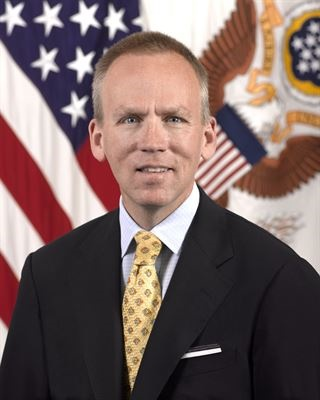ATD Blog
Insider’s View of Force of the Future: Q&A With Brad Carson
Wed Feb 03 2016

The "force of the future" offers a detailed blueprint for how to rebuild the military personnel system. Brad Carson, undersecretary of defense for personnel and readiness, is leading the charge for this reform package. For the March 2016 issue of The Public Manager, I interviewed Carson about these recommendations could fundamentally change how the military recruits, pays, promotes, and manages the active-duty force of 1.3 million troops. Here’s a preview.
We know the labor market’s getting more competitive. Private-sector companies are reaching into the ranks of both military and civilian components to poach talent. What are your thoughts on this?
Yes, we see this all the time. Many military officers can go to the private sector and make a lot more money for basically the same job. People, for example, who are drone pilots or RPA pilots can work for a defense contractor at two or three times the salary that they make in the military—for the exact same job.
Thinking about how we pay people is a really important piece. Perhaps we’re not able to pay what the private sector does for some of these niche skills, but we can make this a vibrant place to work. We can make it a place where people feel that they are gaining a sense of purpose and mission.
A lot of DoD’s senior employees (in uniform and civilian garb) are either eligible for or on the verge of retirement. Do you anticipate a surge in Millennials, and what do you think that will do to the program?
Changes in the labor market are very important to track. Currently, there are multiple generations in the workforce, and the labor market is seeing a surge in Millennials. They’re already half the workforce and their influence is only going to grow over time. We know from public opinion surveys, though, that they have some unique demands. They have expectations of work that are different than older generations, so we have to accommodate those—both in the civilian sector and the military because we are an all-volunteer force.
As a career civil servant, it strikes me that the kinds of issues that are facing the DoD and the kinds of initiatives you’ve outlined are really nonpartisan. They are being driven by the external environment. Do you see it that way?
That’s exactly right. People recognize that the way we do business at the Pentagon really has to change. There’s a war for talent, and there’s a new generation coming on board. We really have to think differently going forward than we have in the past. That is not a Democrat or Republican issue. And leaders just can’t “wait out” the problem. They may wait me out, but I think this change is coming. It is unavoidable.
The great thing about the Department of Defense is that we’re a very adaptable organization. We prioritize success, and when people see that they have to change their personnel practices to be successful, they will do it. And they’ll do it quickly.
I have great optimism that these changes will have purchase across the Department of Defense. You already see it in the departments that are moving out in lots of different interesting directions. Coming to the surface are innovations that are consistent with the broad principles that the defense secretary has laid out.
For the rest of the interview, be sure to read the March issue (available March 10, 2016). In the meantime, check out the current issue of The Public Manager for insight into talent management issues making an impact on the government workforce.
You've Reached ATD Member-only Content
Become an ATD member to continue
Already a member?Sign In
